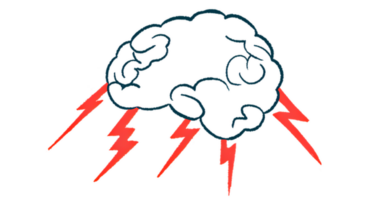A Day in the Life of Dr. C’s Parkinson’s Self-management

If a casual observer were to take a snapshot of my life, they would see a gray-haired guy sitting down while his partner scurries about doing house chores and computer work. But looks can be deceiving because I am using my Parkinson’s self-management toolkit.
My past work designing rehab programs for those suffering from traumatic brain injury always started with two things: a model of the brain functions that were working (and not working), and a healing therapeutic relationship. Both are now in my toolkit for managing my progressive Parkinson’s.
My view is that Parkinson’s is first a brain illness, and second, a motor-movement disorder. Yes, it’s all one interconnected holistic neural network, but prioritization helps me focus the model for treatment application.
I live each day with a broken Parkinson’s brain. The good news is that not all of my brain is broken (although there are days when my brain and I certainly feel that way). What is malfunctioning are the two major dopamine production engines.
Knowing the effects of this Parkinson’s brain damage allows me to build a workaround rehab model to address Parkinson’s as it manifests in my body and brain. It takes my two books — “Possibilities with Parkinson’s: A Fresh Look” (published June 2021) and “Slowing Parkinson’s: A Closer Look into Self-Management” (in the final draft stages this summer) — to fully describe both the model and its application to the design of a Parkinson’s self-management toolkit.
To the casual observer, I don’t look like I’m doing rehab during the day. The central features are meditation, mindful movement, and proper exercise. Those might give the appearance of not getting a lot done.
The use of the Parkinson’s self-management toolkit requires skilled management of the well of resources. Those resources must be available to draw upon to use the toolkit. This means practicing “TBM” (“T” is for threshold management; “B” is for brain rewiring; and “M” is for mindful movement) every day, along with proper diet, rest, and exercise.
The Swedish National Parkinson’s School was structured from 2015 to 2017 to provide a uniform patient education and self-management model for Parkinson’s patients and their care partners. Researchers defined self-care as “the practice of activities that individuals initiate and perform on their own behalf in maintaining life, health and well-being.”
A study published in the journal Parkinson’s Disease in 2020 identified the following five key components:
- “The ability to adjust and engage in self-care activities is crucial.”
- “Self-care is a wide concept that contains three key components: self-maintenance, self-monitoring, and self-management.”
- “Self-maintenance includes activities concerning many aspects of life that a person will have to perform to maintain health and well-being.”
- “Self-monitoring refers to cognitive processes including observation and assessment of symptoms and activities of daily living leading to self-awareness.”
- “Self-management is defined as the ability of a person, in collaboration with family, society, and healthcare services, to handle symptoms, treatments, lifestyle changes, psychosocial strain, and other consequences of disease.”
Self-management is not merely understanding Parkinson’s disease, or just the medications that support medical management. We must accept the responsibility, when we can, to set personal goals, monitor our efforts, seek out solutions, and make a dedicated commitment to our wellness when we are able.
According to the U.S. Centers for Disease Control and Prevention (CDC), “The evidence base for implementing self-management support and education for people with chronic disease … in health care systems and practices is very strong. Studies demonstrate internal and external validity, and there has been independent replication with positive results.”
Even though there is truly little science on Parkinson’s self-management, I have discovered that it is possible to retrain my broken Parkinson’s brain. It requires that I show up every day, and every moment, to use the toolkit.
It is intense work practiced throughout the day, even when it looks like I am sitting and doing nothing. While the CDC has shown proven results with other chronic illnesses, I hope that Parkinson’s — as the fastest growing neurological disease —will soon be included in their efforts.
I must celebrate the small wins in life by maintaining gratitude. I can learn to accept days that require more rest and less exertion. A day in the life of Dr. C may not look like much to the casual observer. Brain rewiring is hard. Practicing living in a calm state is different from doing nothing. Parkinson’s self-management opens the door to more possibilities for me and my life with Parkinson’s.
It takes showing up every day to lay one more brick in the path.
Note: Parkinson’s News Today is strictly a news and information website about the disease. It does not provide medical advice, diagnosis, or treatment. This content is not intended to be a substitute for professional medical advice, diagnosis, or treatment. Always seek the advice of your physician or another qualified health provider with any questions you may have regarding a medical condition. Never disregard professional medical advice or delay in seeking it because of something you have read on this website. The opinions expressed in this column are not those of Parkinson’s News Today or its parent company, Bionews, and are intended to spark discussion about issues pertaining to Parkinson’s disease.








Beverly Davis
Where is their funding for a theracycle for Parkinson’s patients? Al so my special Parkinson’s patch l was I informed went up to. Twelve thousand a year This may cause a any suggestions
David Farris
Thank you so much for sharing your wisdom. Everything you say makes great sense to me. I have two questions please:
1: Do you feel that your brain is mending? I am early in my journey (not actually diagnosed. Suffer from REM Sleep Behavior Disorder and a sore left shoulder and sore left leg. Also have random muscle movements).
2: Have you looked into Binaural Beats to improve brain plasticity? I have not been able to get the hang of meditation but have read how Binaural Beats can get the brain into the same place that meditation does. I have been posting research and free BB files here (my Binaural Beats files are different than most. I put free audiobooks into them as a kind of guided meditation).
Dr. C.
Hi David ~ I don't think we "mend" the damage to the brain that comes with Parkinson's. You find ways to accommodate and work around it. I am not familiar with Binaural Beats but will look into it. The neural plasticity is applied to the work-around, not to try to mend what is already broken. Hope the columns can offer some philosophy of the work-around (brain rehab) and some suggestions for living better with PD. Thanks for your comments and for following along with the columns!
Dr. C.
Derek Foden
My Parkinson disease symptoms started at the age of 47. The fingers on my left hand were stiff and were difficult to move. People noticed that my walk was not normal. I was often asked if I was hurt. I noticed nothing different about my walk. It was difficult getting up from a chair and getting out of a car. I was diagnosed a year later ,it was the onset of tremors starting in my right hand that caused my other symptoms to be recognized as Parkinson's.. I am now 59. With the new herbal medicine for Parkinson I purchased from Multivitamincare . org was my only way to get rid of my PD,the herbal formula effectively reversed my condition and alleviated all my symptoms, people are suffering from this Parkinson disease due to lack of information.